In industrial processes, accurately measuring gas flow rates is crucial for efficiency, safety, and regulatory compliance. Thermal mass flow meters (TMFMs) have become a popular choice for measuring the mass flow of gases due to their precision, ease of installation, and ability to directly measure mass without the need for additional pressure or temperature compensation.
However, when dealing with flammable or explosive gases, concerns arise regarding the safety of using these devices, which operate by heating the gas. This article explores how thermal mass flow meters work, the risks involved when measuring flammable gases, and the safety precautions manufacturers take to mitigate these risks.
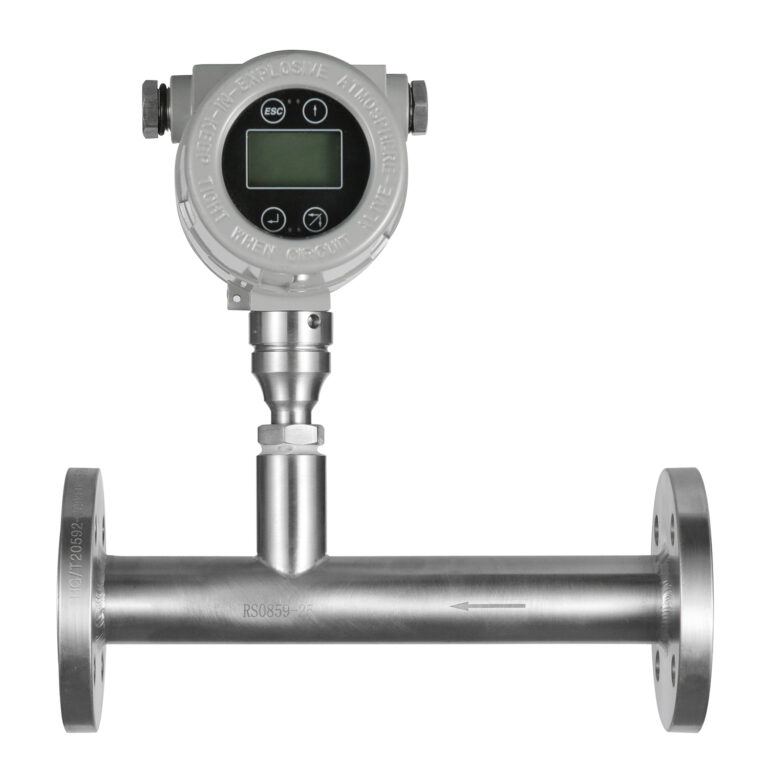
How Thermal Mass Flow Meters Work
Thermal mass flow meters operate based on the principle of heat transfer. The device contains two temperature sensors: one that measures the temperature of the gas flow and another that is heated above the gas temperature. As the gas flows past the heated sensor, it absorbs some of the heat, causing the sensor to cool down.
The rate at which heat is removed from the sensor is proportional to the mass flow rate of the gas. The meter then calculates the gas flow based on this heat loss, taking into account factors such as the gas’s specific heat capacity.
This method provides several advantages:
- Direct mass flow measurement: TMFMs do not require additional measurements of pressure or temperature, simplifying the process.
- Low pressure drop: These meters create minimal resistance to gas flow, making them suitable for a wide range of applications.
- Versatility: TMFMs can measure both low and high flow rates, making them flexible for different types of gas flow.
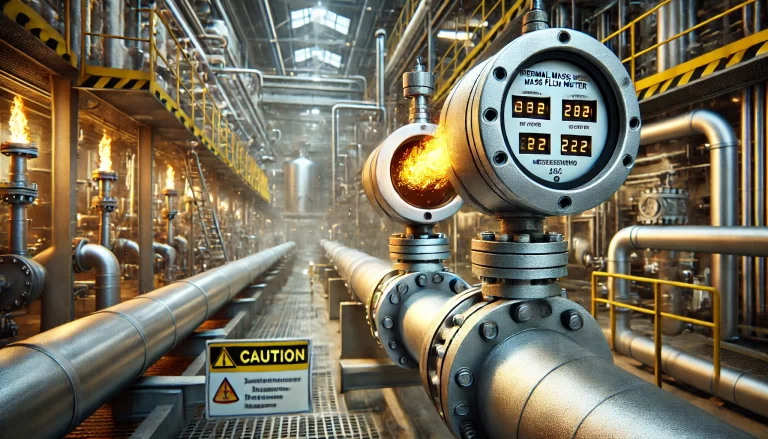
Risks of Measuring Flammable Gases
Despite the benefits, there are inherent risks when using thermal mass flow meters to measure flammable gases. The primary concern is the potential for the heating element to ignite the gas. If the temperature of the heated sensor exceeds the auto-ignition temperature of the gas, there is a real risk of combustion.
Flammable gases such as methane, hydrogen, propane, and acetylene have specific temperature thresholds at which they can ignite without an external flame. If the flow meter’s heating element reaches or surpasses this temperature, it could trigger a fire or explosion.
In addition, gases that are explosive in certain concentrations, such as hydrogen in air, can form hazardous mixtures if they come into contact with an unprotected heat source.
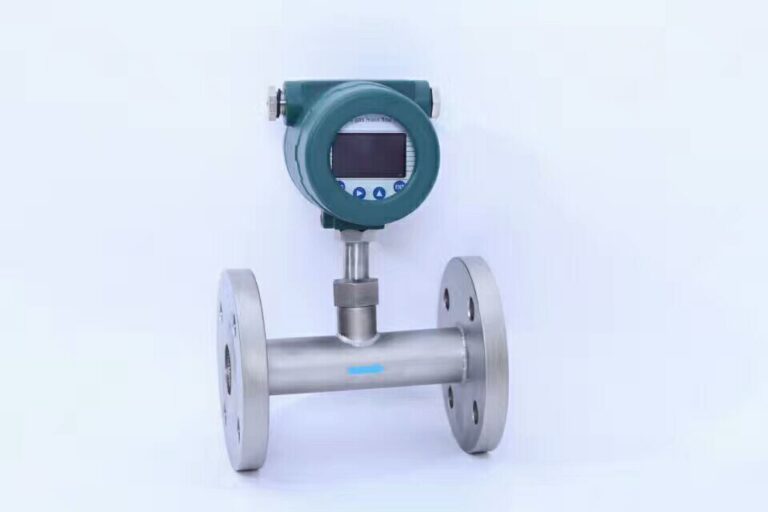
Safety Precautions in Thermal Mass Flow Meters
To mitigate the risks associated with measuring flammable or explosive gases, manufacturers of thermal mass flow meters have developed a range of safety features and standards. These precautions are designed to ensure that the devices can operate safely even in hazardous environments.
Explosion-Proof Design: One of the key safety features in TMFMs for flammable gases is an explosion-proof or flameproof design. This means the flow meter’s enclosure is designed to contain any internal explosion, preventing it from spreading to the surrounding environment. These enclosures are rigorously tested to ensure they can withstand high pressures without compromising safety.
Intrinsic Safety: Some TMFMs are designed with intrinsic safety features, meaning that even in the event of a fault, the energy levels within the device are not high enough to ignite the gas. Intrinsically safe designs limit electrical and thermal energy to ensure they stay below the ignition point of flammable gases.
Temperature Control: The heated sensor in the thermal mass flow meter is carefully controlled to ensure it does not exceed a safe temperature. Advanced temperature regulation systems monitor the sensor’s temperature in real-time and automatically adjust the heating element to prevent it from reaching dangerous levels. This is crucial when measuring gases with low auto-ignition temperatures.
Material Selection: The materials used in the construction of TMFMs also play a critical role in their safe operation. Sensors and housing materials must be resistant to corrosion, high temperatures, and pressure. Many TMFMs are built with stainless steel or other durable materials that are capable of withstanding harsh industrial environments without degrading or sparking.
Compliance with Standards: Devices used in potentially explosive environments must comply with rigorous international safety standards, such as ATEX (Europe), IECEx (International), and UL (United States). These certifications ensure that the flow meters have passed stringent tests related to their safe use in hazardous areas, including zones where flammable gases are present.
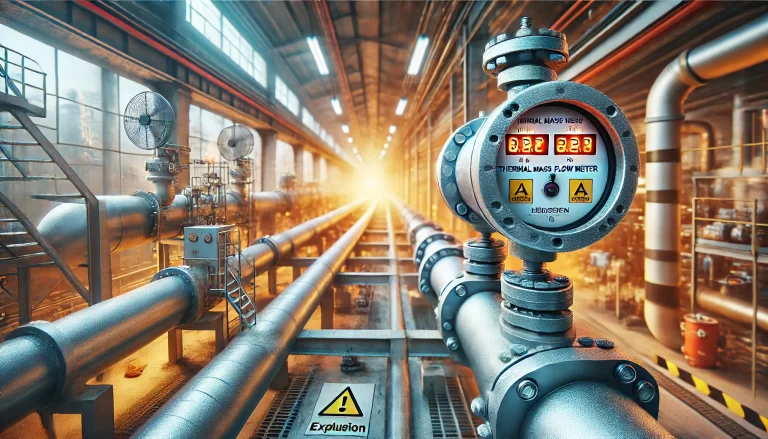
Best Practices for Safe Operation
While manufacturers design TMFMs with extensive safety features, operators also need to follow best practices to ensure safe usage, especially when measuring flammable gases. Some of these practices include:
- Regular Maintenance and Inspection: Routine inspections should be conducted to ensure the flow meter is functioning correctly and that all safety features are operational. Any signs of wear or malfunction should be addressed immediately.
- Proper Installation: It is essential that TMFMs are installed according to the manufacturer’s instructions. This includes ensuring that the device is appropriately grounded and that the correct explosion-proof or intrinsically safe model is used in hazardous environments.
- Gas Purging: In applications involving flammable gases, it is recommended to purge the gas lines with an inert gas such as nitrogen before maintenance or calibration work is performed. This helps to eliminate the risk of accidental ignition during servicing.
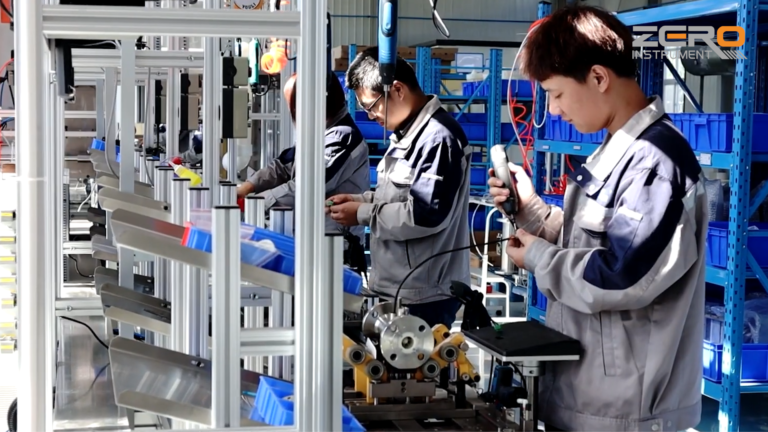
Conclusion
Thermal mass flow meters provide an effective and reliable method for measuring gas flow in a variety of industrial applications. However, when used with flammable gases, safety must be a primary consideration.
Manufacturers have developed robust safety features, such as explosion-proof designs, intrinsic safety, and temperature control systems, to allow these meters to operate safely in hazardous environments.
By following industry best practices and ensuring compliance with relevant safety standards, operators can safely use thermal mass flow meters to measure flammable gases without compromising safety.
